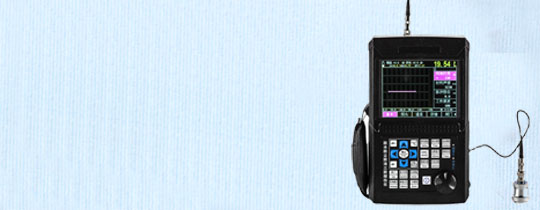
Two wire normally open proximity switch ZLJ-A12-4
A two wire normally open proximity switch is a position switch that can be operated by mechanical direct contact with moving parts. When an object approaches the sensing surface of the switch to the operating distance, it does not require mechanical contact or any pressure to activate the switch, thereby driving DC electrical appliances or providing control commands to computer (PLC) devices.
- ZLJ-A12-4
- ZHUOXIN
- 24v-110v-220v-380v
- IP65
- TT, Paypal, Credit card, Western union
- +86-15163766288
- A two wire normally open proximity switch is a position switch that can be operated by mechanical direct contact with moving parts. When an object approaches the sensing surface of the switch to the operating distance, it does not require mechanical contact or any pressure to activate the switch, thereby driving DC electrical appliances or providing control commands to computer (PLC) devices.
Description

Introduction to ZLJ-A12-4 Two wire Normally Open Proximity Switch: Proximity switches are widely used in Hangkong, Hangtian technology, and industry. In daily life, such as hotels, restaurants, and garages, automatic doors and automatic hot air fans are all used. In terms of anti theft, important places such as data archives, finance and accounting, museums, and vaults are usually equipped with anti-theft devices composed of various proximity switches. In measurement techniques, such as length and position measurement; In control technology, such as displacement, velocity, and acceleration measurement and control, a large number of proximity switches are also used. Wiring: 1) There is a difference between two wire and three wire proximity switches. Three wire proximity switches are further divided into NPN and PNP types, and their wiring is different. 2) The wiring of the two wire proximity switch is relatively simple. The proximity switch is connected in series with the load and then connected to the power supply. 3) Wiring of the three wire proximity switch: connect the red (brown) wire to the positive end of the power supply; Connect the blue wire to the 0V end of the power supply; The yellow (black) line represents the signal and should be connected to the load. The other end of the load is connected as follows: for NPN type proximity switches, they should be connected to the positive end of the power supply; For PNP type proximity switches, they should be connected to the 0V end of the power supply. 4) The load of proximity switches can be signal lights, relay coils, or digital input modules of programmable logic controllers (PLCs). 5) Special attention should be paid to the type selection of the three wire proximity switch connected to the PLC digital input module. PLC digital input modules can generally be divided into two types: one type has a common input terminal that is the negative pole of the power supply, and the current flows out from the input module. In this case, NPN type proximity switches must be selected; Another type of common input terminal is the positive pole of the power supply, and the current flows into the input module. At this time, it is necessary to choose a PNP type proximity switch. Don't make the wrong choice. 6) The two wire proximity switch is limited by working conditions, and when conducting, the switch itself generates a certain voltage drop. When cutting off, there is also a certain amount of residual current flowing through. Therefore, consideration should be given when selecting it. Although the three wire proximity switch has an additional wire, it is not affected by adverse factors such as residual current and works more reliably. 7) Some manufacturers will approach the switch's&quo; Normally open; And&quo; Normally Closed; If the signal is simultaneously led out or other functions are added, please wire according to the product manual. 2. The slot type photoelectric switch is connected to a photoelectric switch. The diode of the photoelectric switch is a light-emitting diode, and the output is a photosensitive transistor. C is the collector and E is the emitter. When using a transistor as a switch, the collector is usually used as the output terminal. General connection method: The diode is the input terminal, E is grounded, C is connected to the load, and the other end of the load needs to be connected to a positive power source. This connection method has a wide range of applications. Connection method: The diode is the input terminal, C is connected to the positive power supply, E is connected to the load, and the other end of the load needs to be grounded. This connection method is only applicable when the equivalent resistance of the load is very small (within a few tens of ohms). If the equivalent resistance of the load is relatively large, it may cause abnormal operation of the switch transistor, leading to unreliable switch operation& nbsp; Two wire normally open proximity switch ZLJ-A12-4; JYB/KS - Ⅱ Bidirectional Rope Switch
Rope Switch SHUANGXLBX
Bidirectional Rope Switch FLK - Ⅱ
Proximity Switch LJ18A4-8-Z/C1X 30VDC
Proximity Switch YG-E4 D8LK 10-30V 100MA
Float Magnetic Switch FQS-4
Proximity Switch ZLJ-A12-4 Normally Open/220VA
Proximity Switch BI/O (NZ15) - M30-AD4X
Temperature resistant Proximity Switch NJ10-30GK-E2-200 ℃
Bidirectional Rope Switch HTJ-A12-4 KL2-II
Proximity switch YD-118-2DK DC10-36V
Proximity switch JL18A3-8J/LK
Runaway switch KPT12-35
Optoelectronic switch E3S-DS10E4
Runaway switch KPT1-10-45
Limit switch SBNXW-FW/I
Runaway switch PXA-02GKH< Stainless steel rope switch BMC PCS31-S
Alarm buzzer AD16-22SM DC24V opening 22mm
Rope switch DLX-SDKB3; AC/DC (0-450V)
Rope Switch SHUANGXLBX
Bidirectional Rope Switch FLK - Ⅱ
Proximity Switch LJ18A4-8-Z/C1X 30VDC
Proximity Switch YG-E4 D8LK 10-30V 100MA
Float Magnetic Switch FQS-4
Proximity Switch ZLJ-A12-4 Normally Open/220VA
Proximity Switch BI/O (NZ15) - M30-AD4X
Temperature resistant Proximity Switch NJ10-30GK-E2-200 ℃
Bidirectional Rope Switch HTJ-A12-4 KL2-II
Proximity switch YD-118-2DK DC10-36V
Proximity switch JL18A3-8J/LK
Runaway switch KPT12-35
Optoelectronic switch E3S-DS10E4
Runaway switch KPT1-10-45
Limit switch SBNXW-FW/I
Runaway switch PXA-02GKH< Stainless steel rope switch BMC PCS31-S
Alarm buzzer AD16-22SM DC24V opening 22mm
Rope switch DLX-SDKB3; AC/DC (0-450V)
Tags
Get the latest price? We'll respond as soon as possible(within 12 hours)

















